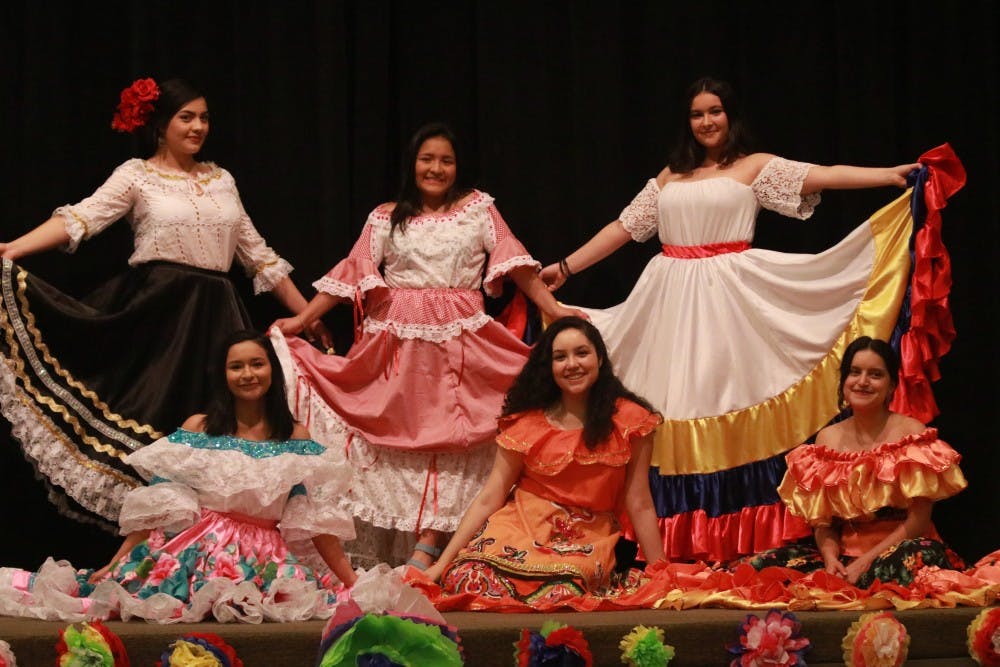This past weekend, the Latinx community on Grounds made history by hosting the very first Latinx Alumni Weekend. Although they are only six percent of the University population, Latinx students are setting their minds on a bigger future. This is a foundational step to mobilize and build a larger system connecting students, alumni and community members.
The Latinx Leadership Council at the University is comprised of representatives and leaders from Latinx organizations. From April 12 to 14, the LLC hosted a variety of Latinx alumni for a jam-packed weekend of events.
Latinx students elaborated on the pride created by being part of a greater cause which reinforces their place at the University and the progress Latinx organizations are making around Grounds.
“We’re only six percent [of the University], and this is the first time we’re doing a Latin American weekend, [which] means a lot to a lot of people,” first-year College student Micaela Vilanova said. “There was not a lot of alumni this weekend, but everyone was so happy we did this because it shows how our community is growing and how we are developing ourselves within our community.”
Hector Quijano, fourth-year College student and LLC member, described the goals of the Latinx Alumni Weekend.
“This is a way to make sure that we have space for the alumni to come back and feel connected to us again and for students to have role models to rely on and knowing they have resources, knowing that they're there,” Quijano said.
The Latinx Alumni Weekend kicked off with the launch of the very first “Latinx History at UVA” website, which is aimed toward archiving the history of all Latinx organizations at the University. Saturday began with sports activities in the morning, followed by the Cultura Showcase in Newcomb Theater, which roughly 40 to 50 people attended.
The first portion of the showcase consisted of a display of traditional Colombian dresses, modelled by six students. The dresses were handmade by third-year College student and Student Director of the Multicultural Center Natalie Romero’s grandma, who is from Colombia.
The students lifted the sides of the dresses and swirled, creating an energetic motion of bright, vibrant colors for the audience to see.
Vilanova modeled a dress commonly worn during the Colombian celebration Carnaval de Barranquilla, a festival which typically consists of a lively parade of music, fashion, dancing and art.
The showcase also incorporated Latin American dances performed by a variety of groups, including the Salsa Club and the Alpha Rho chapter of Sigma Lambda Upsilon, or Senoritas Latinas Unidas Sorority.
Lorena Vera, a second-year College student, wore a pink, red and white costume and performed the Marinera, a classic Peruvian dance.
Fraternidad Folklorica y Cultural Caporales Universitarios de San Simon Filial Virginia, a Latin American competitive dance group from Northern Virginia, displayed a merging of tradition and innovation within Latin American culture.
According to Natalia Chavez, fourth-year College student who performed with San Simon Universitarios Filial Virginia, the group also goes back to dance in Bolivia. They performed a Bolivian folkloric dance called Caporales with a remix of classical Bolivian music, which included modern elements of electronic music.
Caporales pulls from Saya, a type of music created by the Afro-Bolivian community and descendents of African slaves in Bolivia, that symbolizes a regaining of cultural strength after 500 years of colonial oppression.
Their costumes were dazzling, decorated with glitter and a variety of colors, including red, purple and black. The male dancers wore boots with bells attached, with the clanging of shoes augmenting the liveliness of the dance.
According to Chavez, the heeled boots and male costume represent the slave overseer’s outfit, while the music and rhythm of Caporales reflect the sound of Afro-Bolivian slaves’ chains. Together, the performance emphasizes a reclaiming of power.
Students also read poetry written by Latin American authors — Yesika Salgado’s “Brown Girl,” Monica Hicks’ “Latino-Americanos: The Children of an Oscuro Pasado” and Elizabeth Acevedo’s “AfroLatina.” The poems centered around the Latin American experience and discussed being an immigrant in the United States. Alejandro Hernandez, dean of the School of Continuing and Professional Studies, performed Mariachi with his son, Akari Hernandez.
The Cultura Showcase not only depicted Latinx culture through music, poetry, dance and fashion, but also through food catered by Al Carbon Chicken. Traditional Latin American dishes were served, including rice, platanos fritos (fried plantain), chicken, fried yucca and churros.
The weekend events put on by the Latinx community, such as Cultura Showcase, were greatly appreciated by its alumni attendees, such as Class of 2000 alumna Gina Flores.
“It's wonderful [that] students got involved with the alumni,” Flores said. “I'm very inspired to see the students organizing themselves and making a concerted effort to reach out to alumni.”
Although the turnout was not as large as expected, students are optimistic about the future. In fact, Vilanova expects next year’s alumni weekend to be even bigger and better, as this year was just a glimpse at the growing voice within the Latinx community.
“[The] Latinx community is going through a big change ... I feel like sometimes we are underrepresented in this predominately white school, [and] it’s sometimes hard to spread our feelings and messages,” Vilanova said. “Having this event is not only reinforcing our place within the University [but also] showing us that we mean something more. We are ... putting a mark on the University.”







